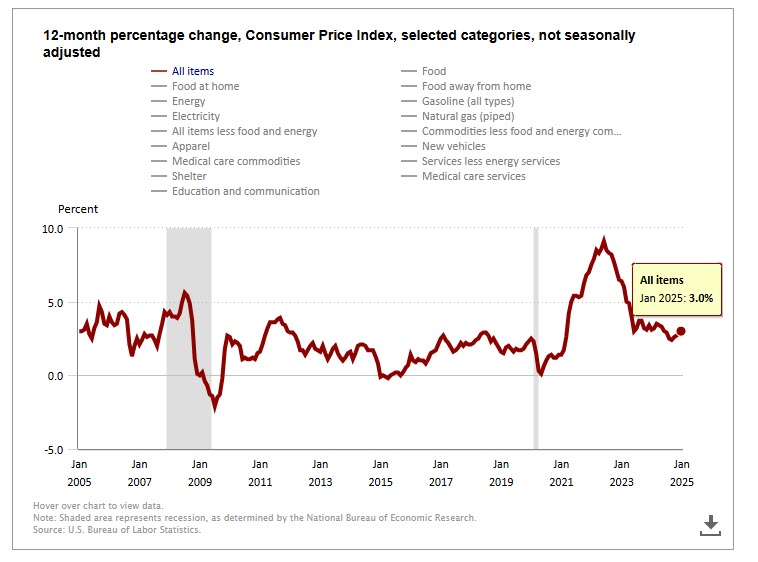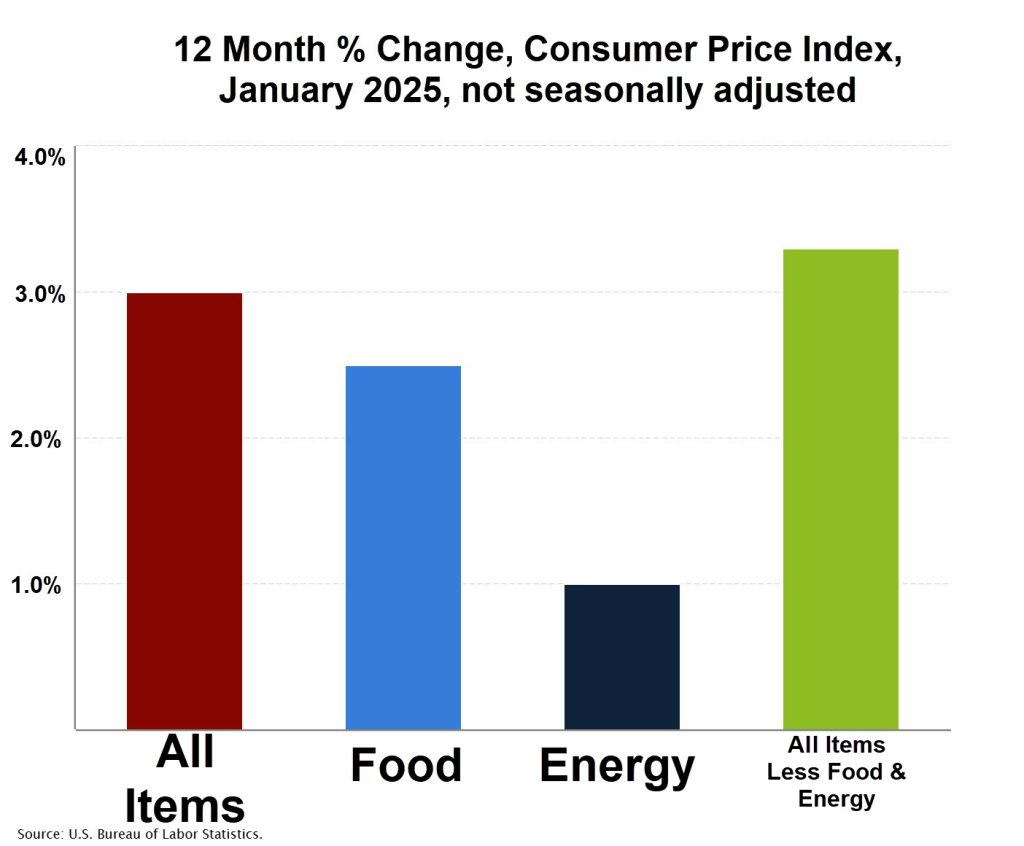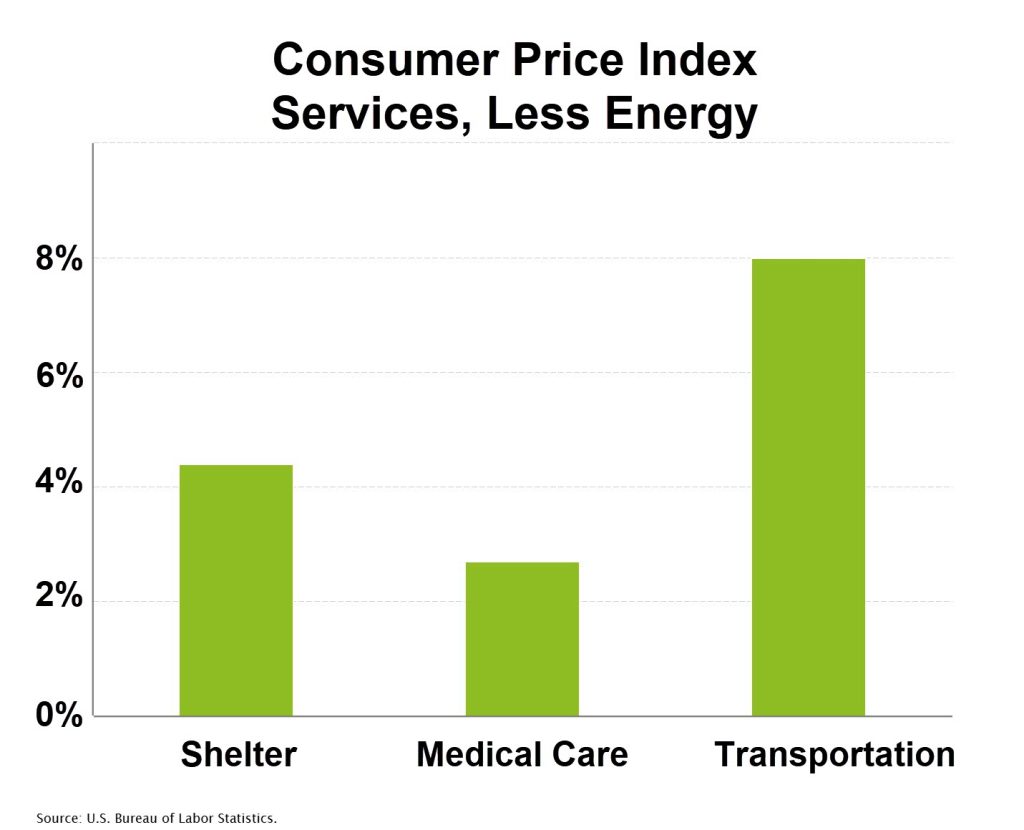
Last week, inflation was calculated at 3% for the last 12 months and while the high cost of eggs was the main concern, those expensive eggs are only the ones that roosters lay, right? This article lays out the facts about inflation and explains what you need to know. Let's get started.
Inflation is called the Consumer Price Index and is measured by the Bureau of Labor who collects over 8,000 data points from 75 cities, including 6,000 homes and 22,000 retailers, for prices people pay for goods and services purchased for everyday living. Inflation is not just one number that applies to everything, some items increase in price while others decrease because each item has its own supply and demand curve.
There are two major populations measured for the Consumer Price Index:
Not included in the CPI are people in rural areas, farms, military, prisons and mental hospitals.

The last 20 years witnessed 2 recessions where inflation declined, as shown in the shaded areas in the chart. The mortgage crisis in 2008 caused a sharp drop in the economy and therefore inflation, and 2020 saw the onset of COVID rapidly shut down the economy, causing unemployment to rise to 14%; however, by 2022, supply chain shortages caused prices to skyrocket, only to fall back to normal in 2023.

The Consumer Price Index is comprised of major categories including "Food" and "Energy", but like any government agency there is a 3rd category called "All Items Less Food & Energy" which includes clothing, vehicles, booze, medical care, rent, cars, airlines and smoking.
The last 12 months saw inflation increase 3%, but the food component only increased 2.5%, and that number is an average of two categories. Food can be further divided into "Food At Home" which increased 1.9%, including a 15% price increase for eggs, and "Food Away From Home" which increased 3.4%.

Energy prices increased 1% over the last year, but that category is comprised of gasoline which dropped .2% and fuel oil which dropped 5.3% over the last year. Electricity prices increased 1.9% and natural gas prices increased 4.9%.
The remaining major category for the Consumer Price Index is called "All Items-Less Food & Energy" and increased 3.3% over the last 12 months. That category includes "Shelter" which increased 4.4%, which was the smallest increase in 3 years, and "Medical Care" which increased 1.6%, but the dagger in the heart was an 8% increase in "Transportation" including an 11.8% increase in auto insurance and 7.1% increase in airline prices.

The Consumer Price Index has 8 different calculation methods, including chained, unchained, seasonally adjusted and not seasonally adjusted, plus monthly calculations that some would incorrectly annualize. But the main idea to take home from this article is that inflation is not just one number, but is a bird's eye view of prices and when you drill down into the sectors, you can see lots of hens running around laying lots of eggs, each one doing something special.

Want more information on inflation and how the Consumer Price Index affects your lease? Catch our articles: